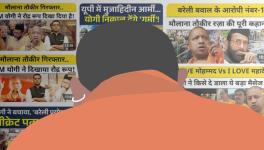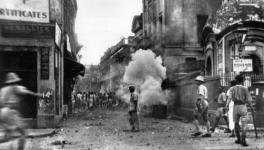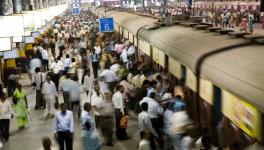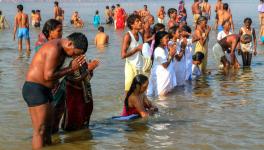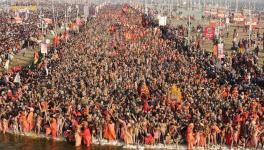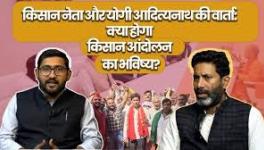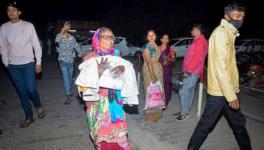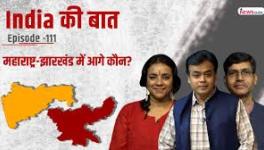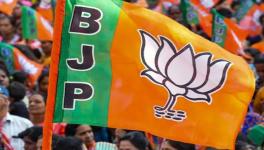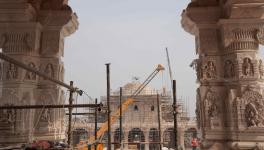From Khairlanji to Hathras, Rape Story Repeats Itself for Dalit Women
The visceral screams of fear and pain, the sense of utter powerlessness, the dread of ominous threats coming true, the sheer brutality—all of it must have been the same for the 19-year-old who was violated in Boolgarhi village in Hathras, Uttar Pradesh as for 17-year-old Priyanka Bhotmange and her mother Surekha in Khairlanji village, Maharashtra.
The two incidents of alleged gang rape and murder of dalit women are separated by 14 long years, during which India’s collective conscience and sensitivity to such crimes was supposedly sharpened by the Nirbhaya case, but the arc of safety and security does not bend any more towards women—especially dalit women—now than it did in 2006. On the contrary, crimes against dalit women, especially assault and rape, have increased manifold.
After the Bhotmange women’s mutilated bodies were fished out of a canal in Khairlanji, Bhandara district in Maharashtra, along with violated bodies of Priyanka’s two teenage brothers, on September 29, 2006, it took public outrage, mainly by dalit organisations, for the then Maharashtra government to crank up action. The outrage also stirred Mumbai and Delhi’s media towards covering the horror that had unfolded that evening. In these respects too, not much changed in the past 14 years.
Maharashtra’s then Home Minister had expressed doubts that the victims may have been Maoists. In the Hathras case, Uttar Pradesh officials were crass. They initially denied the incident, then called it “fake news”, and displayed their most impervious side, making the brutalised 19-year-old lie on a bench under the blazing sun, sending her only to a local hospital despite grievous injuries, taking her to Delhi only after she turned critical, according to her family. If this was not enough, they burned her body after locking up her family in their home in the middle of the night and admonishing them “aap se bhi kuch galatiyan hui hai”.
Dalit women live with little dignity, it seems they must die without dignity too. From Khairlanji to Hathras lie lakhs of stories—many of them corpses—of brutalised women, especially dalit and tribal women, all of whom bore the brunt of toxic masculinity along with gender or caste supremacy on their bodies.
From 2006 to 2019, the total number of rapes reported is over 4,00,000; a substantial number of the reported rapes—some estimates say one in every four—is on dalit women. For every rape reported, several go unreported. And this reporting does not include marital rapes.
The numbers
The National Crime Records Bureau data shows the total number of rapes reported in 2006 was a shade less than 20,000; 10 years later, it was closer to 40,000. Occasionally, a particularly brutal case might catch the nation’s attention. Nirbhaya’s plight shook the nation in December 2012, the outrage turned public opinion against the incumbent Congress-led governments in Delhi and the Centre. It led to changes in the criminal law on rape and solemn pledges of “no more Nirbhayas”, a fund was set up, and the case exploited by the Bharatiya Janata Party (BJP) in the 2014 general election.
The rise in total rape numbers every year since then was cited as evidence of more women reporting the crime. It might be partly true. The sustained coverage of the Nirbhaya case might have chipped away some of the stigma around reporting rape, but it also established that as many women were being raped. The total number clocking well above 32,000-33,000 every year—2016 was the worst in the past seven years—meant nearly 90 women raped every day.
The large majority are statistics, a few are remembered like the little girl in a Kathua temple, the 12-year-old in Chennai raped over seven months, the Kerala nuns, the Unnao case in which the victim was set ablaze near a court, the young woman in Uttar Pradesh who saw her family wiped out after raising her voice against BJP’s MLA Kuldip Sengar and the young veterinarian in Hyderabad.
However, to read the rape story only through numbers would be to skim the surface of the horror women face every day. Parse the numbers and the relationship between caste and rape, or any crime against women, is inescapable. Overlay this with state-wise data and it is evident that dalit women in Uttar Pradesh, Rajasthan and Madhya Pradesh, where toxic masculinity meets caste bigotries, face the worst of sexual crimes. These states consistently rank high for crimes against women, especially rapes, and of dalit women. The perpetrators, almost without exception, are men of upper castes.
Crimes against dalits increased by 6% between 2009 and 2018, according to the National Dalit Movement for Justice (NDMJ) report this year. “Dalit women often bear the brunt of violence at the hand of dominant caste; violence as grave as physical violence, sexual violence and witch branding. In the Covid-19 pandemic also, Dalit women witnessed various forms of atrocities… In the last five years, 41,867 cases or 20.40% were related to violence against Scheduled Caste women,” the report said.
The NCRB confirms the trend of crimes against dalits. It registered surges in such crimes every year between 2013 and 2018. Uttar Pradesh reported the highest number of atrocities against dalits, at 25.6% of all cases reported. In 2017, the agency published data for cases specifically and exclusively registered under the Scheduled Castes and Scheduled Tribes (Prevention of Atrocities) Act 1989. There were 5,775 cases; 55% of them related to “intentional insult or intimidation with intent to humiliate” dalits, other cases pertained to occupation of dalits’ land, preventing dalits from using public places and social boycott.
Beyond numbers lies caste
In Boolgarhi-Hathras, the victim’s family was among the few dalit families in the village and had a running dispute over land with their upper caste—Thakur—neighbour, according to her brother who spoke to the media. His grandfather had lost his fingers while trying to save himself during an attack some years ago, he added, detailing how shop-keepers sprinkle water on the money they handed out or how they are not allowed to touch merchandise in a shop.
To ignore the context of caste and see it merely as a sexual crime would be meaningless. The young woman, as activists and scholars have pointed out, was assaulted, violated and tortured by the Thakur men to send out a message: stay within your status, don’t mess with us.
In Khairlanji, the story was similar. The Bhotmanges was among the handful of dalit houses in the village dominated by OBC-Kunbi caste. Most of the local chatter about why the family was heinously attacked and killed centred on the fact that they owned and tilled five acres, Surekha managed the land affairs herself, and was making sure that her children studied well. She had also stood witness for a Khairlanji policeman in an altercation he had had with some villagers. Together, it was seen as an affront by the upper caste men. The family was not allowed to build a pucca house, Surekha was “a mere Dalit woman was thumbing at us” as an accused villager had told this writer.
Surekha was not only raped, she was stripped and paraded around the village, then sexually assaulted by a large group of men such that her skull was broken and an eye was disgorged. Her daughter too was paraded naked, raped, and foreign objects were found in her private parts. Her brothers too suffered similar assaults. These were caste atrocities beyond a shadow of doubt. “The entire village was involved, I was in my farm and then I hid behind a bush,” said Bhaiyyalal Bhotmange, Surekha’s husband.
Local cops were suspended and the case investigated by the CBI. The fast-track trial court held eight people guilty of murder and handed out death penalty to six of them. In 2010, the Nagpur bench of the Bombay High Court heard appeals and commuted the death sentence to 25 years imprisonment; it also termed the murders as “revenge killings” and held that the murders were not pre-meditated or motivated by caste prejudices. The SC and ST (Prevention of Atrocities) Act was ignored—and a justification was found for this too.
Equally shocking was that the guilty were absolved of rape charges. The delay in registering cases and conducting medical examinations, unwillingness of the local police to prevent erasure of evidence, lackadaisical prosecution were all responsible. The judgement makes a reference to how Priyanka’s body bore injury marks all over and that the accused disrobed her “to get satisfaction to their sexual eyes” but the court held the women were not raped. Bhotmange got some compensation and lived elsewhere, he used to go to his house every September 29, to light a lamp. He died three years ago. The appeals are pending in the Supreme Court.
In the Hathras case too, the police reportedly prevented the family from even seeing the victim one last time, held back all villagers, and most insensitively burned her body in the dead of the night. The national outrage ensured that the accused were arrested. But no one is sure that the medical evidence collected will prove the charges of rape in the fast-track court that Uttar Pradesh chief minister Yogi Adityanath set up under pressure.
A savarna (upper caste) group already banded together to express support for the accused but the Chief Minister waited out two weeks—and for a nudge from the Prime Minister—before even setting up a Special Investigation Team to probe the case. Even as this was announced, the equally heinous Balrampur case came to light—again a young dalit woman, breaking boundaries to get educated, raped and murdered allegedly by two Muslim men.
Rape as a ‘Message’ to Dalits
Crimes against dalits—and tribals—including rape does not happen out of the blue. It often begins with age-old discriminations, each case of insult to and assault of dalits over months and years on land or water or access to public spaces creates an atmosphere in which dalits can be attacked—with impunity. The atmosphere when such seemingly minor cases go unrecorded or unpunished is that upper castes can get away because the administration is “on our side”. Small sections of national or local media have recorded minor crimes against dalits in the past few months; a journalist took note of nearly 18 rapes or gang-rapes in two days after the Hathras incident.
These sustained and heinous crimes are a message, according to dalit scholar and professor Anand Teltumbde, now accused of Maoist links and imprisoned. Atrocities against dalits have “a unique mix of sadism and bestiality”, he and S Anand wrote, 10 years after the Khairlanji shocker, atrocities are “a mode of teaching a lesson to the entire Dalit community”. Teltumbde spoke of how Khairlanji dispelled many myths, including that economic development does away with casteism or that dalits in political or administrative power can orient the administration to do justice for the community.
The few dalit MLAs in the Uttar Pradesh legislature have been unmoved so far about the insults or atrocities. The Assembly from 2017 comprises nearly 45% upper caste MLAs, up 12% from the previous Assembly. Ministers in Narendra Modi’s cabinet who made political capital out of the Nirbhaya case, even Modi himself, have said little by way of consolation or condemnation of the incidents. Former Union Minister of Women and Child Development Maneka Gandhi and the incumbent, Smriti Irani, were elected from Uttar Pradesh but the vocal women have not said a word. There is no getting away from the fact that the BJP is heavily weighted in favour of upper castes—brahmins, thakurs and banias—in its election strategies and political capital, never mind the talk about “sabka saath”.
In his analytical book, ‘Khairlanji: A Strange and Bitter Crop”, Teltumbde detailed why such cases of extreme brutality on dalits, especially women, are not “isolated events” or “just misdeeds of some uncultured barbaric monsters”. Violence against dalits, especially rape, is a functional and systematic way of enforcing social order which is why it is “performed as a public spectacle by collectives…rape is not a private affair, it becomes a celebratory spectacle. Atrocities involve intricate and devious planning so that they become a ‘lesson’ for the entire Dalit community”, he wrote.
This is why knee-jerk reactions such as “hang the rapists” cries that gathered momentum over Hathras, hanging the rapists of Nirbhaya, killing the accused in police encounters as in Hyderabad do not address the core issue of continuing and escalating attacks on dalits. These actions merely satisfy the revenge motive in an outraged public without in any way addressing the underlying caste issues. That is why, in his book, Teltumbde cautioned, “Every village in India is a potential Khairlanji”.
The author is a senior Mumbai-based journalist and columnist who writes on politics, cities, media and gender. The views are personal.
Get the latest reports & analysis with people's perspective on Protests, movements & deep analytical videos, discussions of the current affairs in your Telegram app. Subscribe to NewsClick's Telegram channel & get Real-Time updates on stories, as they get published on our website.









